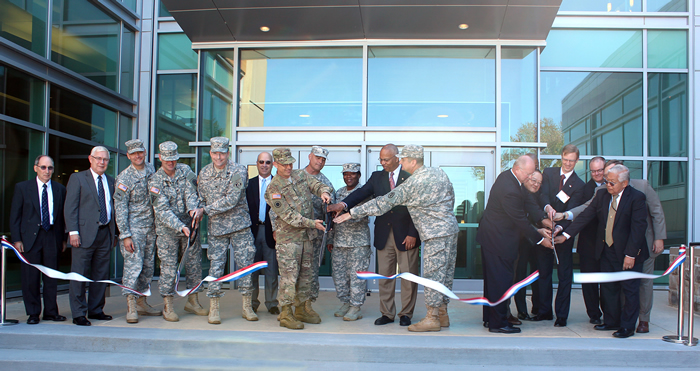Army Opens New Chemical Defense Research Institute

Six years to the day after the groundbreaking ceremony for new construction first took place, leadership at the U.S. Army Medical Research Institute of Chemical Defense hosted a ribbon-cutting ceremony Sept. 15 to open their new state-of-the-art chemical defense lab at the Edgewood area of Aberdeen Proving Ground in Maryland.
The new institute consolidates USAMRICD's capabilities into one single facility of more than 500,000 square ft. resting on 24 acres. The new facility has increased laboratory infrastructure and capability, including the three-fold expansion of neat agent laboratory space. The new facility is also certified silver under the Leadership in Energy and Environmental Design green-building certification program based on environmentally conscious design elements in the categories of sustainable sites, water efficiency, energy and atmosphere, innovation and design process, materials and resources and indoor environmental quality.
"Our nation's new USAMRICD provides our service members and citizens with the advanced medical research capacity and capability necessary to survive exposure to chemical weapons, as well as training on medical countermeasures," said USAMRICD Commander Col. Roman Bilynsky. "The investment our leadership has made in creating this new institute is incredibly important for the safety of our Service Members, as well as our public's health."
USAMRICD, a subordinate institute of the U.S. Army Medical Research and Materiel Command, conducts research and training that mitigates and attempts to eliminate the threat posed by chemical warfare agents. Chemical warfare agents are extremely toxic compounds that are relatively inexpensive and, in some cases, easy to produce. These characteristics make them a feasible weapon of choice for terrorist organizations.
Maj. Gen. Brian C. Lein, the U.S. Army Medical Research and Materiel Command and Fort Detrick commander said, "While we hope that chemical weapons will never be used again, history has proven that hope is not a method."














